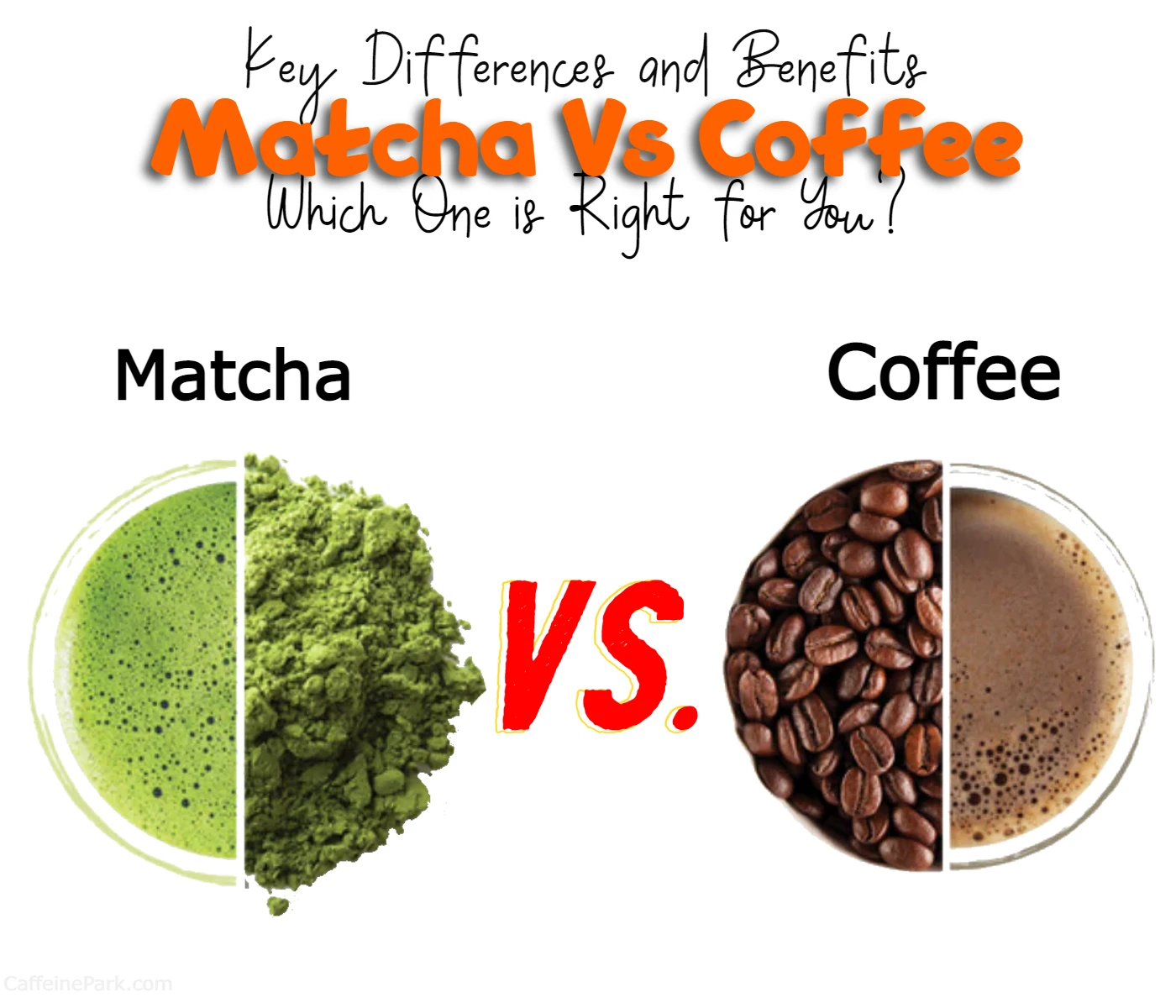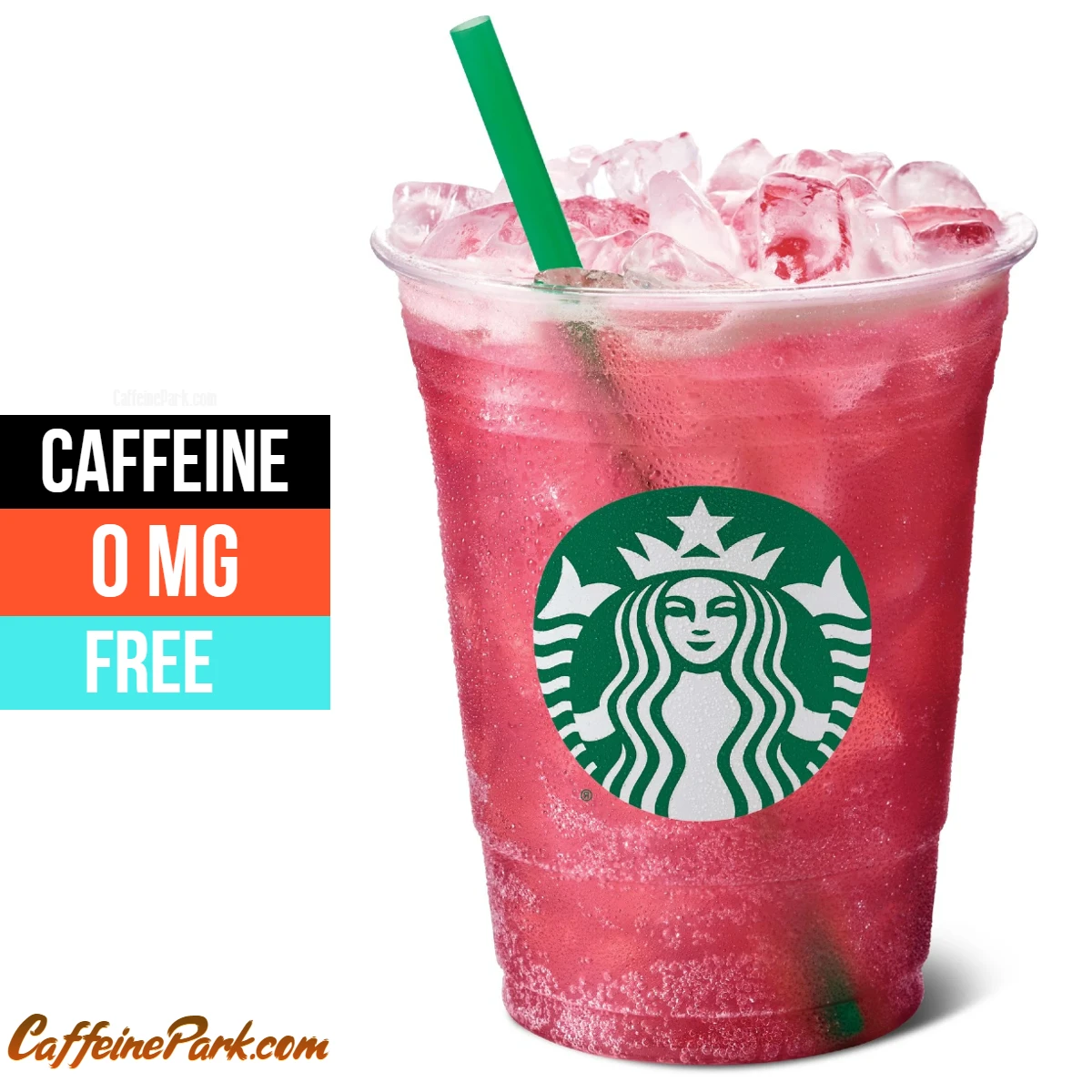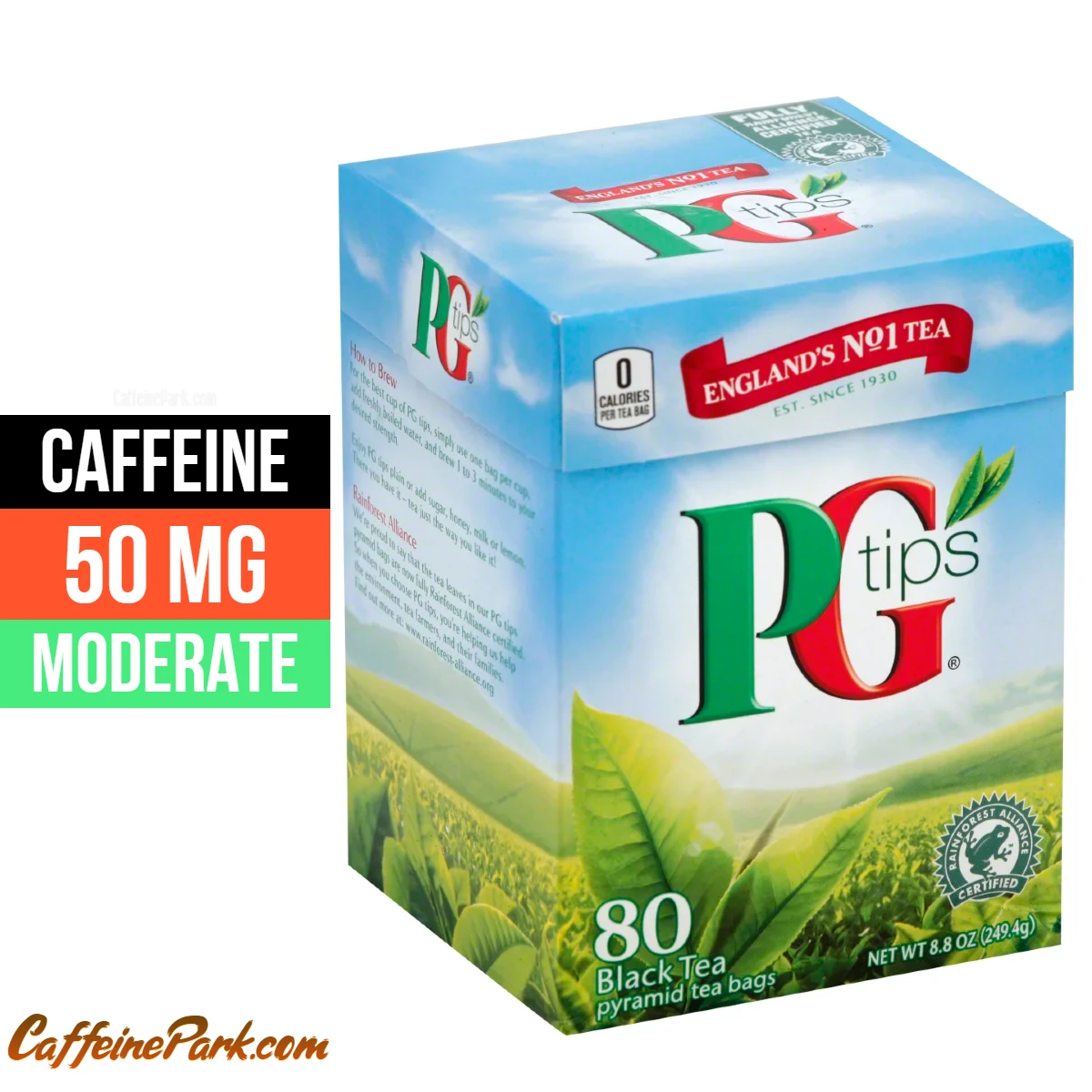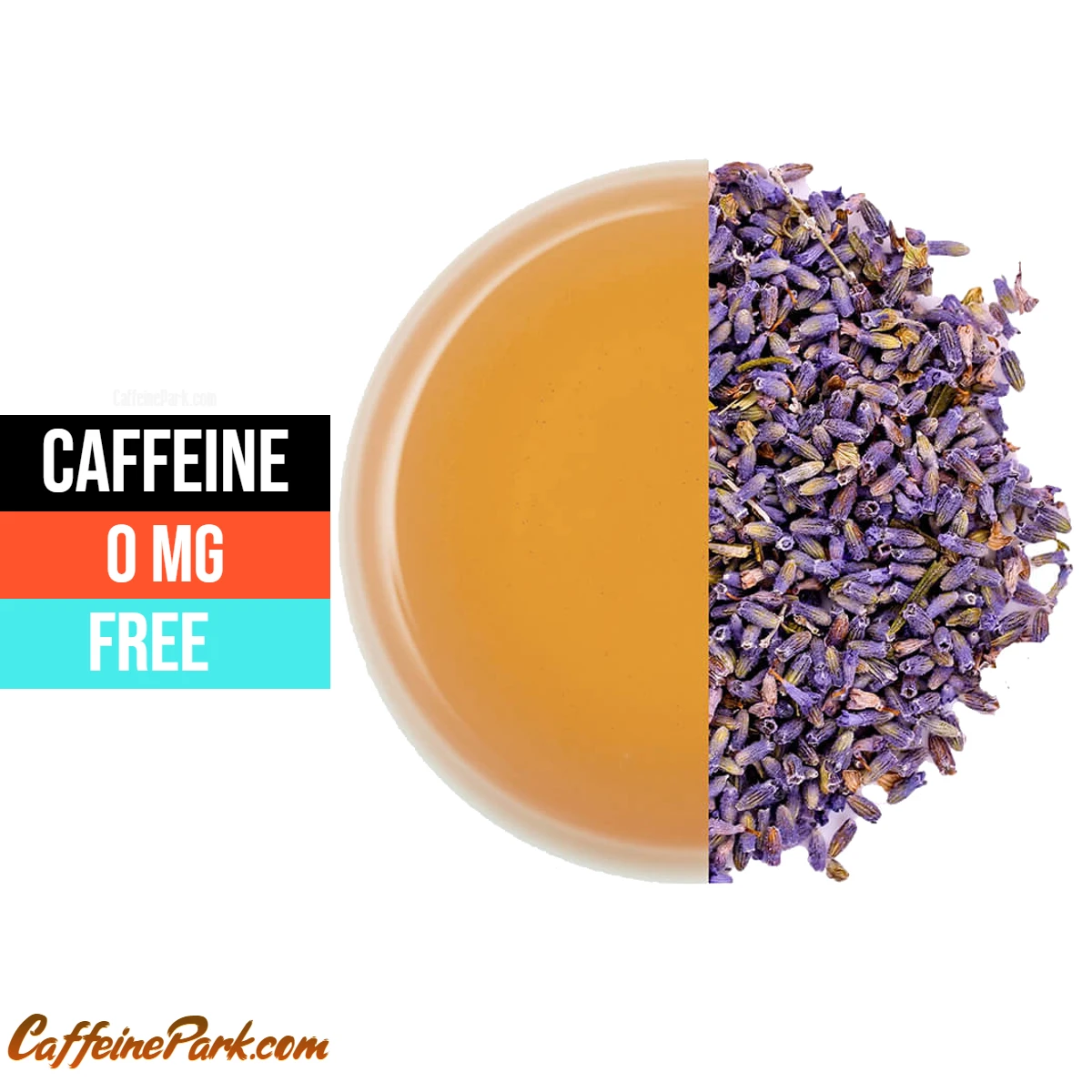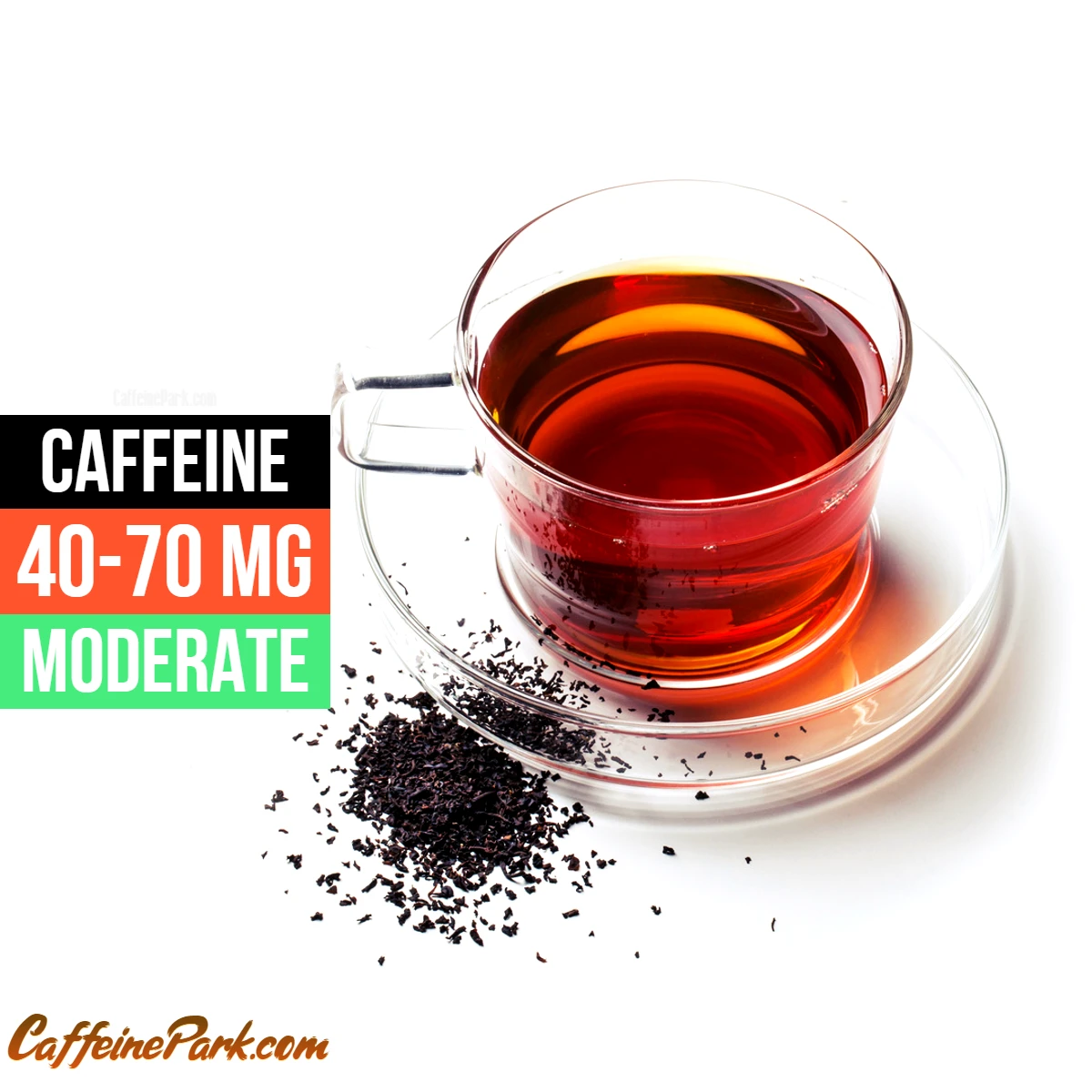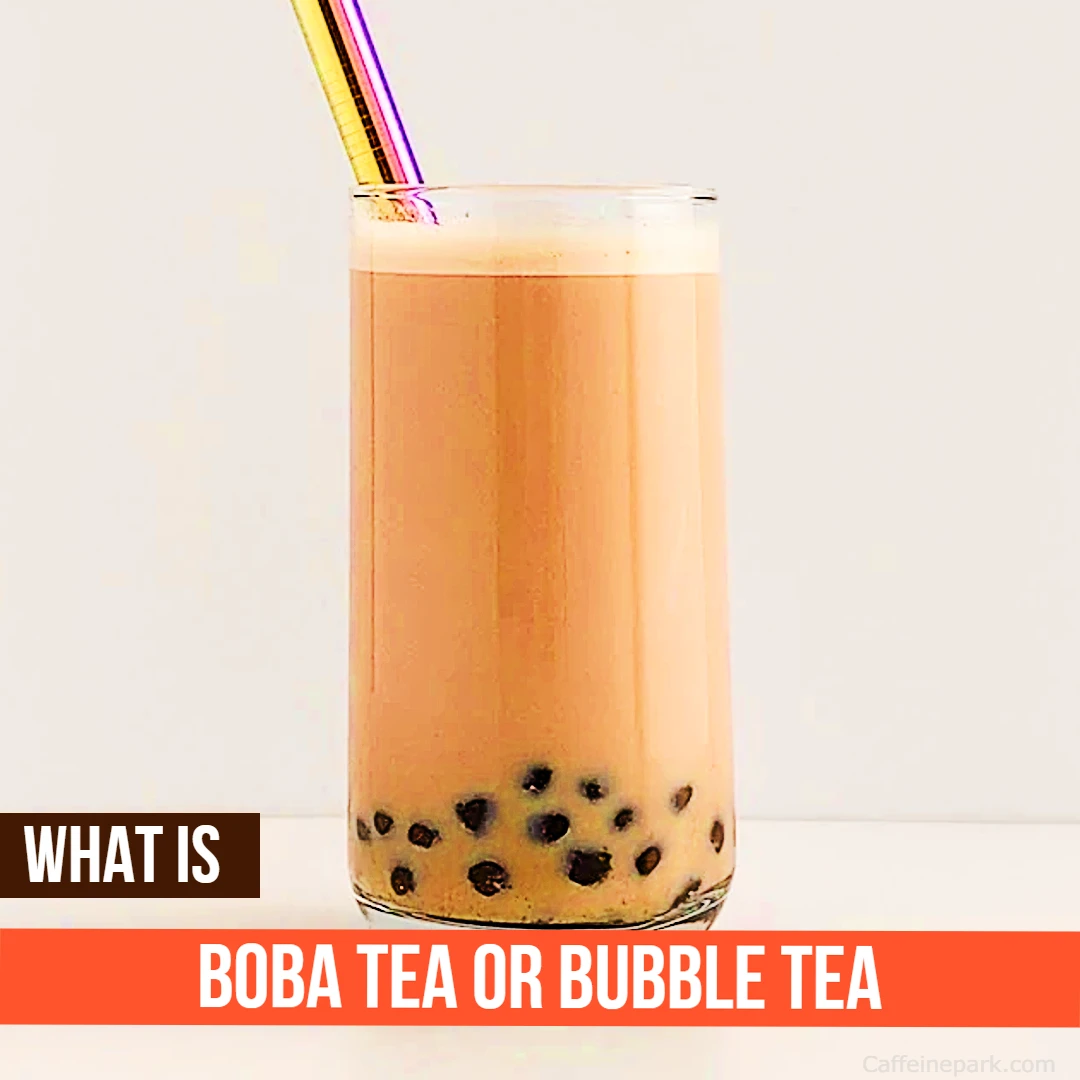
Boba tea, also known as bubble tea or pearl milk tea, is a popular drink originating from Taiwan. It is made by combining tea, milk, and chewy tapioca pearls, also known as “boba,” at the bottom of the cup. The boba pearls are made from tapioca starch, which is extracted from the root of the cassava plant.
They are often sweetened and can be colored or flavored. The drink is typically served over ice and can be customized with different levels of sweetness and milk alternatives. Boba tea can come in a variety of flavors, including green tea, black tea, and fruit-flavored teas. It is a popular drink among young people, and many boba tea shops have become popular hangout spots.
Does Boba tea have caffeine?
Yes, but the caffeine content in boba tea can vary depending on the type of tea used. Black tea, which is commonly used in boba tea, typically contains around 47 milligrams of caffeine per 8 ounces.
| Cup Size | Caffeine Content | CAFFEINE STRENGTH |
|---|---|---|
| 8 ounces | 47 milligrams | MODERATE |
| 12 ounces | 70 milligrams | HIGH |
| 16 ounces | 95 milligrams | HIGH |
| 20 ounces | 115 milligrams | VERY HIGH |
| 24 ounces | 140 milligrams | VERY HIGH |
- Caffeine Amount: 47 mg
- Caffeine strength: MODERATE
- Calories: 0
- Serving size: 8 fl oz can
However, it’s important to note that the caffeine content can differ depending on the brand, preparation method, and individual variations. If you’re specifically looking for boba tea without caffeine, you may find decaffeinated options available or choose alternative tea options with lower caffeine content, such as herbal teas or green teas.
Compare Caffeine in Boba tea vs Coffee
When comparing the caffeine content in boba tea and coffee, it’s important to note that the caffeine levels can vary depending on factors such as the type of tea or coffee beans used, the brewing method, and the serving size. However, there’s a general comparison:
Boba Tea:
- An 8-ounce serving of boba tea typically contains around 47 milligrams of caffeine.
- Boba tea is made by combining tea (usually black or green) with chewy tapioca pearls and various flavors.
- It provides a moderate caffeine boost compared to other beverages.
Coffee:
- An 8-ounce cup of brewed coffee typically contains approximately 95 milligrams of caffeine.
- Coffee is made from brewed coffee beans and is available in various strengths and flavors.
- It generally has a higher caffeine content compared to boba tea.
Compare Caffeine in Boba tea vs other
Here’s a comparison of the caffeine content in boba tea with some other popular beverages:
| ITEMS | SERVING SIZE | CAFFEINE |
|---|---|---|
| Boba tea | 8 fl oz | 47mg |
| Thai tea | 8 fl oz | 47mg |
| Matcha Tea | 8 fl oz | 64mg |
| PG Tips Black Tea | 6.78 fl oz | 50mg |
| Black Tea | 8 fl oz | 42mg |
| Lipton Tea | 8 fl oz | 55mg |
| Fast Lane Black Tea | 8 fl oz | 110mg |
| Teavana Tea | 8 fl oz | 41mg |
| Guayusa Tea | 8 fl oz | 41mg |
It’s important to note that these values are approximate and can vary depending on the specific brand, preparation method, and serving size. Additionally, individual reactions to caffeine can vary, and some people may be more sensitive to its effects. It’s always a good idea to check product labels or consult with the manufacturer or a healthcare professional for accurate information on the caffeine content in specific beverages.
Review
Boba tea is a delicious and popular drink that originated in Taiwan. It is made by combining tea, milk, and tapioca pearls and can come in a variety of flavors. It has become a cultural phenomenon and a popular hangout spot for many young people. However, it is relatively high in sugar and calories, and some shops may use artificial ingredients and preservatives, which may have health concerns.
History
Boba tea, also known as bubble tea or pearl milk tea, originated in Taiwan in the 1980s. The drink was first created by a tea shop owner named Liu Han-Chieh in Taichung, Taiwan. He experimented with different ingredients and came up with the idea to add chewy tapioca pearls, or “boba,” to his tea. The drink quickly became popular among local students and soon spread to other parts of Taiwan.
In the 1990s, boba tea started to gain popularity in other parts of Asia, particularly in China, Hong Kong, and Japan. In the 2000s, boba tea started to gain popularity in the United States and other parts of the world. Today, boba tea can be found in many countries around the world and has become a popular drink among young people.
Boba tea has evolved from its original form as a tea with tapioca pearls, to various other forms such as slushies, smoothies, and even ice cream. Also, the range of flavors has been expanded from classic tea flavors to many unique and creative flavors. Boba tea has become a cultural phenomenon, not only in Taiwan, but also in the United States and other countries, and it’s continued to grow in popularity.
Popular Flavors
Boba tea, also known as bubble tea, offers a wide range of flavors to suit different tastes and preferences. Here are some popular flavors of boba tea:
- Classic Milk Tea: A traditional and widely loved flavor, classic milk tea combines black tea with milk or creamer for a creamy and mildly sweet taste.
- Taro: Taro is a root vegetable commonly used in Asian cuisine. Taro-flavored boba tea offers a unique, slightly nutty, and mildly sweet flavor.
- Thai Milk Tea: Originating from Thailand, Thai milk tea is made with strongly brewed black tea, sweetened condensed milk, and spices like cardamom or star anise, resulting in a rich and aromatic flavor.
- Matcha: Matcha boba tea is made from finely ground green tea leaves. It has a distinct earthy and slightly bitter flavor, balanced with sweetness when combined with milk or sweeteners.
- Fruit Flavors: Boba tea often comes in a variety of fruit flavors, such as strawberry, mango, peach, lychee, or passion fruit. These flavors can provide a refreshing and fruity twist to the tea base.
- Jasmine: Jasmine boba tea features the fragrance of jasmine flowers infused into the tea, resulting in a delicate floral flavor that pairs well with the tapioca pearls.
- Honeydew Melon: Honeydew melon-flavored boba tea offers a sweet and refreshing taste reminiscent of the juicy and fragrant melon.
- Wintermelon: Wintermelon-flavored boba tea has a subtle and mildly sweet taste, often with a caramel-like note, making it a popular choice among tea enthusiasts.
These are just a few examples of popular flavors, but there are numerous other creative and unique flavors available in boba tea shops. Additionally, many shops offer the option to customize your boba tea by combining different flavors or adding toppings like fruit jellies or aloe vera. Exploring different flavors can be a fun and delicious experience when it comes to enjoying boba tea.
How it’s made
Boba tea is made by brewing tea, combining it with milk or a non-dairy alternative, and adding chewy tapioca pearls. The drink is typically served over ice and can be customized with different levels of sweetness.
Variations
Boba tea can also come in the form of slushies or smoothies and can be made with different types of tea and milk, such as green tea and almond milk. Some variations also include additional ingredients like jelly or pudding.
Nutritional Value
Boba tea is relatively high in sugar and calories but can be a source of carbohydrates from tapioca pearls.
- Calories: 120
- Protein: 0 grams
- Fat: 1.5 grams
- Carbohydrates: 28 grams
- Fiber: 0 grams
- Sugar: 28 grams
Ingredients
- Stovetop
- Pot
- Water
- Measuring cup
- Measuring spoons
- Brown sugar
- Slotted spoon
- Large bowl
- Tapioca flour (also called tapioca starch)
- Small spoon
- Two small bowls or cups
- Cutting board
- Butter knife
- Adult helper
- A glass of cold uncaffeinated tea with milk (optional)
- Other types of flour, such as corn starch, potato starch, or wheat flour (optional)
Popularity and Cultural Significance
Boba tea has become increasingly popular around the world, particularly in Asia, but also in the United States, Canada, Europe, and Australia. It has become a cultural phenomenon, with many young people enjoying it as a trendy and delicious beverage. Many boba tea shops have also become popular hangout spots for friends and popular places to enjoy a sweet treat.
Variations in Tapioca Pearls
The tapioca pearls used in boba tea can vary in size and texture. Some shops use smaller pearls that are more tender, while others use larger pearls that have a chewier texture. Some shops also offer other types of pearls, such as flavored pearls or grass jelly.
Health Concerns
Boba tea is relatively high in sugar and calories, and can also be high in fat if made with whole milk. Some shops also use artificial sweeteners and preservatives, which may have health concerns. Some people also have concerns about the safety and quality of the tapioca pearls used in boba tea.
Pros and Cons
Pros of Boba Tea
It’s important to keep in mind that some of these cons can be mitigated by choosing a tea shop that uses quality ingredients, and by customizing the order to suit personal preferences or dietary restrictions.
- Delicious and refreshing: Boba tea is a sweet and tasty drink that can be enjoyed on a hot day or as a dessert.
- Customizable: Boba tea can be customized to your liking, with options for sweetness level, ice level, and milk alternatives.
- Variety of flavors: Boba tea comes in a variety of flavors, including original milk tea, matcha green tea, taro, and strawberry.
- Cultural significance: Boba tea has become a cultural phenomenon and a popular hangout spot for many young people.
Cons of Boba Tea
- High in sugar and calories: Boba tea is relatively high in sugar and calories, and can also be high in fat if made with whole milk.
- Artificial ingredients: Some shops may use artificial sweeteners and preservatives, which may have health concerns.
- Quality of tapioca pearls: Some people have concerns about the safety and quality of the tapioca pearls used in boba tea.
- Caffeine content: Boba tea contains caffeine which may be a concern for some people.
How to Make Boba Tea?
Tapioca balls are made by boiling tapioca starch until it forms a ball shape. You need to boil them for 30 minutes and cool them down for 30 minutes. A soft and sticky tapioca ball is what you want. Too much water will make your balls stick together.

Every cup of boba starts with a scoop of tapioca balls, followed by tea or juice, and then a whole lot of ice. There are now special ribbed plastic cups, wide straws (for fitting tapioca balls), and seals (so all you have to do is stab the seal with the straw) that are specifically made for bubble tea and sealing machines that will get the job done automatically. Many modern-day boba chains also have syrup and tea dispensers, allowing customers to specify sweetness or milk levels.
3 Recipes to Whip Up Homemade Boba Tea
Simple Bubble Tea Recipe
Course: Herbal Tea, bubble tea, teaCuisine: JapaneseDifficulty: Easy2
servings30
minutes10
minutes300
kcal40
minutesIngredients:
1 cup boba tapioca pearls
7 cups water
2 tablespoons of honey or sugar syrup
1 cup tea
Ice
Directions
- Start by bringing the water to a rapid boil over high heat.
- Add the boba pearls to the boiling water and cook for 10 minutes or until soft.
- To save the cooked tapioca pearls for later, turn down to medium heat and let the pearls cook in the hot water for another 30 minutes.
- You need to rinse the tapioca pearls after they are boiled to preserve texture and flavor.
- Use a fine mesh strainer to strain the pearls before adding them to a small bowl.
- If you are going to store excess pearls, cool them to room temperature before sealing the container.
- Add in the honey or sugar syrup.
- Brew tea using tea bags or loose-leaf tea and one cup of water. For black teas, brew between 200 and 212 F. Brew green teas between 160 and 180 F.
- Let the tea cool to room temperature before adding the pearls.
- Add 3 to 4 ice cubes to a tall glass. For larger servings or pitcher-sized amounts, simply quadruple this recipe.
- Add a whole cup of ice to keep the beverage cool in the midday sun if serving at an outdoor brunch. Add flair to your boba tea by garnishing it with a slice of lemon.
- Sip through a wide straw and enjoy the chewy nature of the boba pearls and the sweet taste of the tea.
2. Bubble Milk Tea Recipe
Ingredients:
- 1 cup boba tapioca pearls
- 7 cups water
- 2 tablespoons of honey or sugar syrup (or another sweetener like brown sugar syrup or agave)
- 1 cup of black tea or green tea
- 1/2 cup of milk (whole milk, almond milk, soy milk, etc)
- Ice
Directions
- Follow the instructions from the simple boba tea recipe to cook and rinse the tapioca balls.
- Brew and add tea in the same way you would for simple boba tea.
- You can use regular milk or alternatives such as half and half, rice milk, coconut milk, or almond milk. Many boba teas are sweetened with condensed milk.
- This variety is thicker and more luxurious when it comes to flavor and texture.
- It is full-bodied and more similar to a shake.
- Add ice and serve the boba milk tea in tall glasses

3. Fruit Infused Bubble Tea
Bubble tea is a popular drink made with ingredients such as flavored syrups, nuts, seeds, and dried fruits. Fruit added to the mixture changes the flavor of the beverage. A few fruit juices can be substituted for fresh fruit but it may change the texture of the beverage too much.
Ingredients:
- 1 cup boba tapioca pearls
- 7 cups of water
- 2 tablespoons of honey or sugar syrup
- 1 cup tea (try Ginger Citrus Guayusa or Rainforest Mint for a high caffeine boost and delicious flavor)
- 1 cup fresh fruit
- 1 cup milk
- Ice
Directions
- Follow the instructions above to prepare the tapioca pearls.
- Combine fruit, honey, milk, tea, and ice in a blender or a cocktail shaker.
- Pour into a tall glass and add ice. Garnish with a few pieces of fruit or add a mint leaf.
Potential Health Benefits of Boba Tea
Boba tea, also known as bubble tea, is a popular beverage enjoyed by many. While it’s important to consume it in moderation and be mindful of added sugars and other ingredients, there are potential health benefits associated with certain components of boba tea. Here are a few:
- Antioxidant properties: Boba tea often includes tea as a base ingredient, which can provide antioxidants. Teas like green tea and black tea contain polyphenols, which are antioxidants that may help protect against cell damage and reduce the risk of chronic diseases.
- Hydration: Boba tea is primarily made up of water, which contributes to your daily hydration needs. Staying adequately hydrated is essential for overall health and the proper functioning of various bodily processes.
- Potential digestive benefits: Tapioca pearls, the chewy balls found in boba tea, are made from cassava root. Cassava contains dietary fiber, which can support digestive health by promoting regular bowel movements and aiding in the maintenance of a healthy gut.
- Variety of flavors: Boba tea offers a wide range of flavors, including fruit flavors and herbal infusions. Choosing boba tea with natural fruit or herbal flavors may provide additional nutrients and phytochemicals present in those ingredients.
- Enjoyment and socialization: While not a direct health benefit, the enjoyment of boba tea can contribute to overall well-being. Sharing a delicious beverage with friends or taking a moment to savor a tasty treat can positively impact mood and social connections.
It’s important to note that the potential health benefits of boba tea are not solely attributed to the drink itself, but also to the quality and type of ingredients used. It’s advisable to choose boba tea made with high-quality tea leaves, natural flavors and limited added sugars to maximize potential health benefits. As always, consulting with a healthcare professional or registered dietitian can provide personalized guidance based on your specific health needs and goals.
Side Effects of Boba Tea
While boba tea can be enjoyed in moderation, it’s important to be aware of potential side effects associated with certain components of the beverage. Here are some considerations:
- Caffeine sensitivity: Boba tea contains caffeine, which can cause side effects such as jitteriness, increased heart rate, insomnia, and digestive issues in individuals who are sensitive to or consume excessive amounts of caffeine. It’s important to know your caffeine tolerance and limit your consumption accordingly.
- Sugar content: Many boba teas contain added sugars, syrups, or sweetened condensed milk, which can contribute to high sugar intake. Excessive sugar consumption is associated with weight gain, dental problems, increased risk of chronic diseases like diabetes and heart disease, and energy crashes. Opting for boba tea with less added sugar or using natural sweeteners in moderation can help mitigate these effects.
- Calorie content: Depending on the ingredients and preparation methods, boba tea can be relatively high in calories. Regularly consuming high-calorie beverages without considering overall calorie intake can contribute to weight gain and potential nutrient imbalances.
- Allergies and intolerances: Boba tea may contain ingredients that some individuals are allergic or intolerant to, such as dairy, gluten, or specific fruits. It’s important to be mindful of any known allergies or intolerances and read ingredient labels or ask the staff about the contents of the boba tea.
- Tapioca pearls: The chewy tapioca pearls found in boba tea can pose a choking hazard, especially for young children or individuals who have difficulty swallowing. Take small sips and chew the pearls thoroughly to reduce the risk of choking.
- Quality of ingredients: The quality and hygiene standards of boba tea preparation can vary. Consuming boba tea from unreliable sources or establishments with poor food safety practices may increase the risk of foodborne illnesses.
It’s important to note that individual sensitivities and reactions may vary. If you have specific health concerns or dietary restrictions, it’s advisable to consult with a healthcare professional or registered dietitian for personalized advice. Additionally, practicing moderation and being mindful of the ingredients and nutritional content of the boba tea you consume can help mitigate potential side effects.
FAQs
On average, an 8-ounce serving of boba tea contains around 47 milligrams of caffeine.
Boba tea falls somewhere in between other caffeinated beverages. For reference, an 8-ounce cup of coffee has approximately 95 milligrams of caffeine, while a can of Coke contains around 34 milligrams.
Yes, the caffeine content in boba tea can vary depending on factors such as the type of tea used and the specific recipe. It can also be influenced by the type and brand of tea leaves used, as well as the brewing method.
To obtain accurate information on caffeine levels, it’s recommended to check with the boba tea shop or read the product labels. They will provide specific details regarding the caffeine content in their drinks.
The caffeine content in boba tea is considered moderate compared to other caffeinated beverages. If you are sensitive to caffeine or trying to limit your intake, you may opt for decaffeinated boba tea or choose tea options with lower caffeine content. It’s always best to consume any beverage in moderation according to your personal preferences and caffeine tolerance.
Is boba tea healthy?
Boba tea is relatively high in sugar and calories, and can also be high in fat if made with whole milk. Some shops also use artificial sweeteners and preservatives, which may have health concerns. It is also relatively high in caffeine. It can be enjoyed as a treat, but consuming it in moderation would be advisable.
What are the tapioca pearls in boba tea made of?
The tapioca pearls in boba tea are made from tapioca starch, which is extracted from the root of the cassava plant. They are often sweetened and can be colored or flavored.
How long do tapioca pearls last?
A: Tapioca pearls can last for several months if stored properly in an airtight container in the refrigerator. They can also be frozen for longer storage.
Can you make boba tea at home?
Yes, you can make boba tea at home by brewing tea, mixing it with milk or a non-dairy alternative, and adding sweetened tapioca pearls. There are also packaged boba tea kits available for purchase.
What are the most popular flavors of boba tea?
The most popular flavors of boba tea include original milk tea, matcha green tea, taro, and strawberry. Some shops also offer unique flavors such as lavender and rose.
Is boba tea vegan?
Boba tea can be made vegan by using a non-dairy milk alternative, like soy, almond, or oat milk, and tapioca pearls are vegan. However, it’s always best to check with the shop as some might use dairy milk or other animal-derived ingredients.
ِDoes Starbucks Sell Boba Tea?
Starbucks does not currently sell traditional Boba Tea (bubble tea) on its menu. Starbucks primarily focuses on coffee, espresso-based drinks, and teas. While they do offer a variety of teas, they do not offer the traditional Boba Tea which includes tapioca pearls. However, Starbucks has been known to experiment with different drink options, so it’s possible that they may offer Boba Tea or a similar drink in the future.
What Does Boba Taste Like?
Boba, also known as tapioca pearls, have a chewy texture and a slightly sweet taste. They are often described as having a neutral or slightly sweet flavor, similar to a gummy bear. The tapioca pearls that are used in boba tea are usually made from tapioca starch and are sweetened, and sometimes flavored. They are added to the tea and milk to provide a chewy texture and a sweet taste to the drink.
However, the taste of boba can vary depending on how it is prepared and the ingredients used. Some boba may be sweeter or more flavorful, while others may be less sweet. Additionally, the flavor of boba can be affected by how long it has been cooked, with longer cooking times resulting in a chewier texture and a more pronounced flavor.
It’s worth noting that the boba pearls can be cooked to be less sweet and have a neutral taste, it depends on the recipe and the shop.
is Boba Tea Keto Friendly?
Healthline deems keto to be an effective low-carbohydrate diet. Tapioca pearls or Boba are made using tapioca starch which is very high in carbohydrates. That is why boba tea is not considered keto-friendly.
Are the balls in boba edible?
Tapioca balls are made primarily out of starch extracted from the cassava root. They originated as a cheaper alternative to pearl sago in Southeast Asian cuisine. They are mostly used in making bubble tea and other desserts.

Are you supposed to eat the balls in boba tea?
Tapioca balls aren’t any bigger than peanuts, but they’re made of tapioca starch instead of cornstarch. The tapioca pearls are about half the size of regular rice puffs, and each pearl contains 50% more sugar than normal. and can be chewed as you swallow down the delicious liquid.
Read More:
Contents
- Does Boba tea have caffeine?
- Compare Caffeine in Boba tea vs Coffee
- Compare Caffeine in Boba tea vs other
- Review
- How to Make Boba Tea?
- 3 Recipes to Whip Up Homemade Boba Tea
- Simple Bubble Tea Recipe
- Potential Health Benefits of Boba Tea
- Side Effects of Boba Tea
- FAQs
- Is boba tea healthy?
- How long do tapioca pearls last?
- Can you make boba tea at home?
- What are the most popular flavors of boba tea?
- Is boba tea vegan?
- ِDoes Starbucks Sell Boba Tea?
- What Does Boba Taste Like?
- is Boba Tea Keto Friendly?
- Are the balls in boba edible?
- Are you supposed to eat the balls in boba tea?

